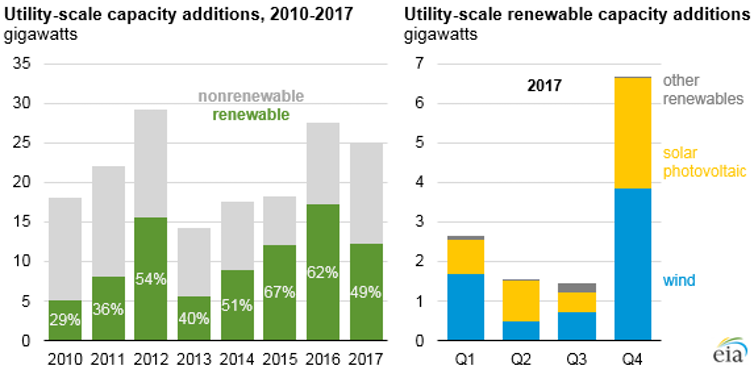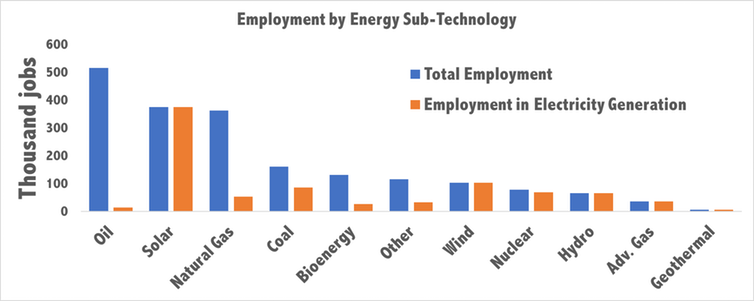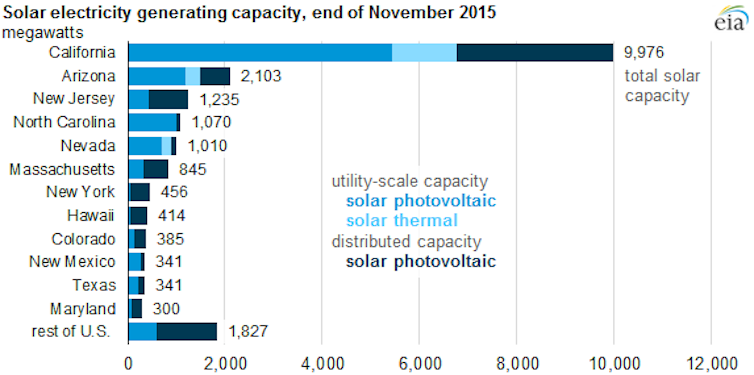Solar Tariffs Get Hit With a Wave of Legal Challenges
Solar tariffs could trigger a broader trade war. The anticipated fallout from the Section 201 solar trade case is now officially underway. Three Canadian solar panel manufacturers launched a lawsuit against the Trump administration at the United States Court of International Trade last week, claiming the new global safeguard measures violate the Trade Act of 1974 and the NAFTA Implementation Act. The complaint was filed on February 7 — the same day President Trump’s tariff proclamation took effect. […]
Click here to view original web page at www.greentechmedia.com
The European Union also filed a request for consultations with the World Trade Organization that day, following similar steps taken by China, Taiwan and South Korea. Singapore subsequently filed for consultation at the WTO on February 9. Bilateral consultations between the parties are the first stage of formal dispute resolution.
Legal actions follow Trump’s decision in the Section 201 case petitioned by U.S.-based crystalline silicon (CSPV) solar manufacturers Suniva and SolarWorld Americas. In a proclamation issued January 22, Trump decided to impose a 30 percent tariff on imported CSPV solar cells and modules — set to decline by 5 percentage points per year, over the four-year tariff period. The ruling also includes a tariff-free carve out for the first 2.5 gigawatts of solar cells imported each year.
Several developing nations, listed as Generalized System of Preferences beneficiary countries, were exempt from the tariffs because they currently account for a small portion of U.S. solar imports (although that could soon change).
In recommendations submitted to President Trump by the U.S. International Trade Commission (ITC) last fall, three of the four commissioners determined that imports from Canada are not harmful to U.S. producers. And the fourth commissioner did not explicitly address Canada in her proposal. Despite the negative findings, Trump’s ruling did not exempt companies from north of the border.
Similarly, all ITC commissioners exempt U.S. free trade partner Singapore (home to solar manufacturer REC Group) in their recommendations. However, Singapore was not exempt in Trump’s decision.
The Canadian lawsuit — brought by Silfab Solar, Heliene and Canada Solar Solutions — states that the president’s proclamation is “unlawful as applied to plaintiffs, and inflicts grave and irreversible harms on them.” They are now seeking an injunction prohibiting the enforcement of new tariffs against them.
Canadian manufacturers face layoffs and plant closures
The case argues that the U.S. violated sections 201 and 203 of the Trade Act by imposing safeguard measures on Canada without the required recommendation from the ITC. The plaintiffs also claim the U.S. violated sections 311 and 312 of the NAFTA Act because, as the ITC determined, Canada does not “account for a substantial share of total imports” or “contribute importantly to the serious injury, or threat thereof, caused by imports.”
The plaintiffs state that American-based solar manufacturers account for less than 5 percent of CSPV cells and modules used in the U.S., while Canadian manufacturers account for only 2 percent.
It’s worth noting Trump decided Generalized System of Preference countries are exempt from the tariffs until they reach 3 percent of U.S. CSPV cell and module imports. If the 2 percent figure cited by Canadian manufacturers is correct, it would seem to represent a reasonable level by the administration’s own standards.
But while the effect on the U.S. solar market is minimal, these exports represent the “bulk” of the Canadian solar manufacturing industry, according to a plaintiff memo. Because the plaintiffs produce CSPV modules, and not cells, Canadian solar products are immediately subject to tariffs.
“That tariff will make it prohibitively expensive for Plaintiffs to import CSPV modules from Canada to the United States, and within weeks, it will compel Plaintiffs to terminate employees, close manufacturing facilities, forego business opportunities, lose sales, and — in several cases — cease business entirely,” the memo states.
The Court of International Trade is a special court based in New York City with a very experienced group of judges looking to answer a very specific set of legal questions that differ from the WTO, said Allan Marks, energy and project finance attorney at law firm Milbank, Tweed, Hadley & McCloy.
“They’re looking at whether these tariffs, in particular as applied to Canada, comply with U.S. law,” said Marks, who teaches energy trade issues as an adjunct professor at U.C. Berkeley. “The WTO is looking at whether U.S. government safeguard measures, broadly applied, comply with international law. Those are different questions and the standards are slightly different.”
Action at the court level is also likely to be much faster than at the WTO level, which could take 18 months or more. In the Canadian company case, the U.S. government will have to respond within the coming weeks. The administration could choose to act through the courts, or the Office of the U.S. Trade Representative could modify the tariff order to exempt Canada, which would render the case moot. Marks noted the USTR has the authority to change or rescind the tariff at any point.
China threatens retaliatory measures
At the WTO, there are several different courses of action countries can take to challenge the tariffs. One route is to question whether or not the sudden increase in imports affecting U.S. companies was “unforeseen.” The Trump administration prepared for this challenge by requesting the ITC submit a supplemental report.
However, countries can also challenge whether the ITC did a good job in making its determination in the global safeguard case, or they can take issue with how the safeguard measures were implemented. To that end, several complaints submitted to the WTO center on the need for proper “consultation” and “compensation” between trading partners, in accordance with international law.
In a global safeguards case, trade authorities only have to find injury against their domestic industry — they don’t have to prove specific countries have broken the rules, as is required in an anti-dumping and countervailing duties case. As part of the Section 201 process, the U.S. needs to discuss its tariff decision with affected countries prior to applying the safeguard measures, said Marks.
“If the WTO finds that our injury finding wasn’t thoroughly done or it didn’t allow proper time for compensation and consultation, then retaliatory compensation would be allowed under international trade rules,” he said.
Retaliatory measures played a role in convincing the U.S. government to withdraw tariffs on imported steel products in a Section 201 case decided in 2002. Retaliation is intentionally designed to create political pressure, and is often targeted at unrelated industries, said Marks.
Chinese officials have already confirmed they’re launching an investigation into whether about $1 billion of U.S. sorghum exports were being dumped or receiving subsidies — a move widely viewed as a response to the Trump administration’s protectionist trade policies, The New York Times reports. According to Bloomberg, Chins is also looking to impose trade restrictions on soybeans imported from the U.S.
“If you’re smart, you [retaliate] on things being exported from districts of congressional leaders,” Marks said, assuming the WTO gives the go-ahead. “You could see [countries] imposing it on coal exports. I’ve also heard whiskey or bourbon mentioned. In the past, it was North Carolina textiles. If Paul Ryan is still Speaker of the House, exporting Wisconsin cheese could get harder. Whatever it’s going to be, it’s going to be something that moves the needle politically.”
The Trump administration is likely also thinking about the political dynamics.
“I don’t think they want to hurt the U.S. economy or even renewable energy; I think they just want to placate their base,” Marks said.
“They want to find a way to thread the needle that meets their political goals,” he surmised. “Whether or not it works is another question.”
As challenges move forward at the WTO and the New York court, individual companies have until the end of the month to request an exclusion from the new tariffs. With American jobs on the line, this decision also comes with political implications.





